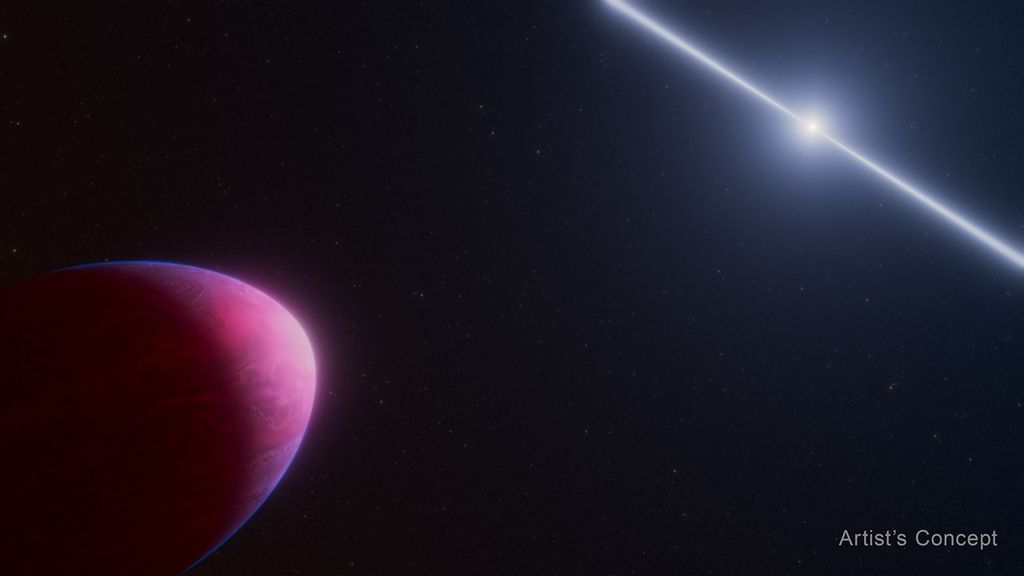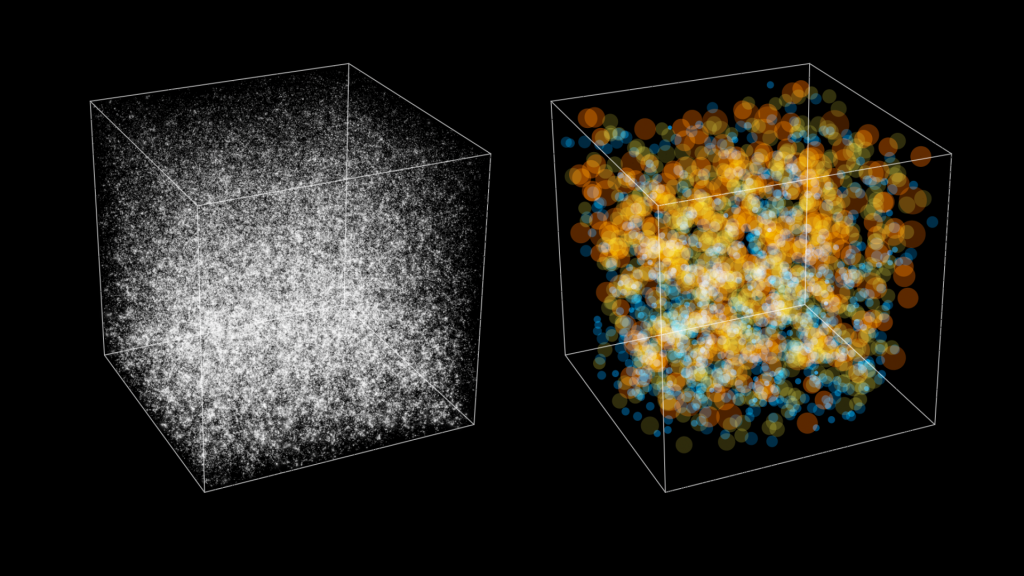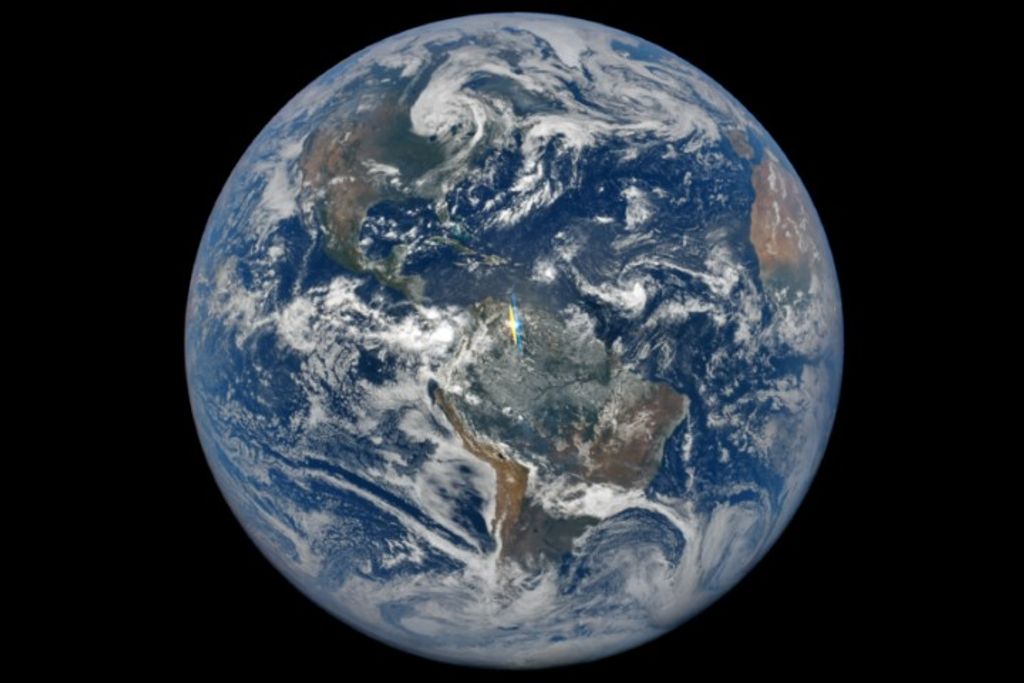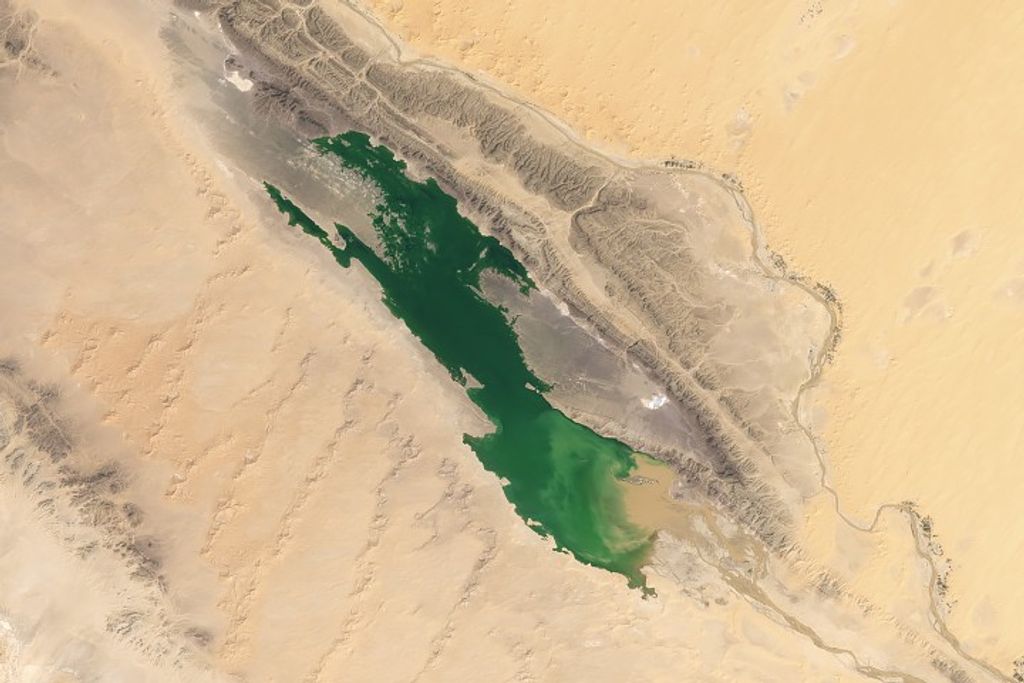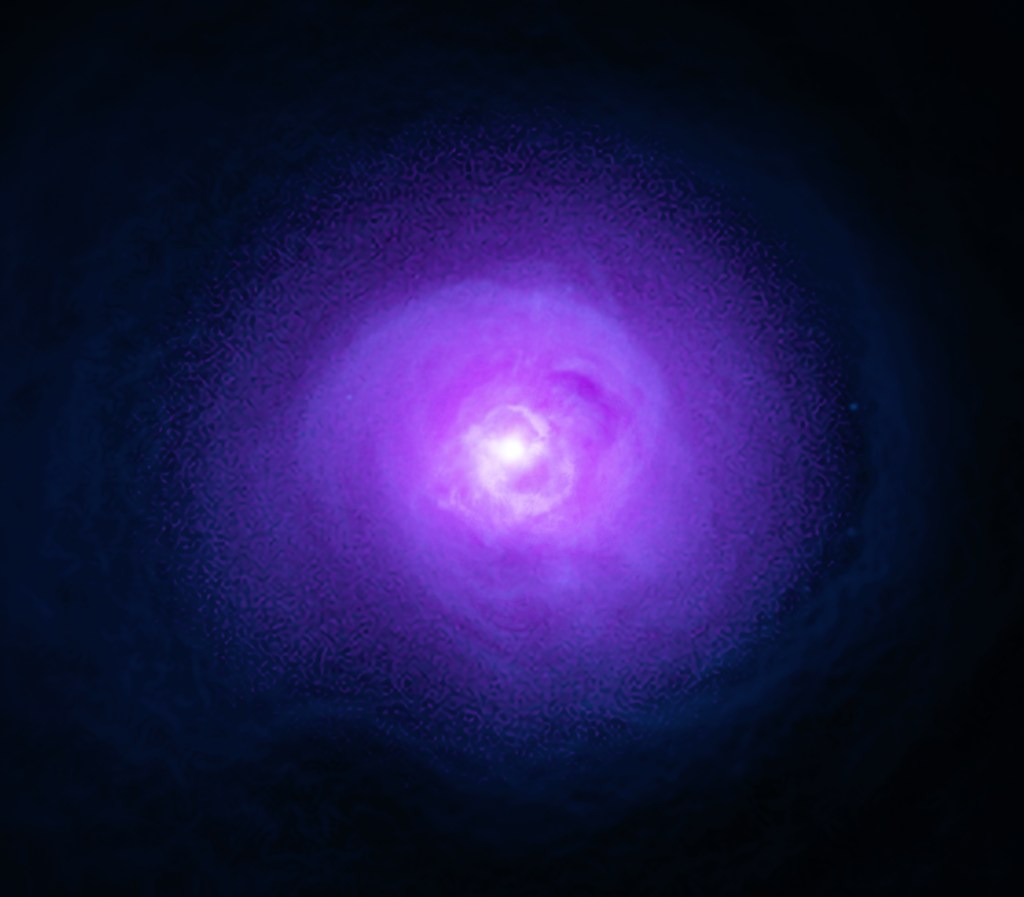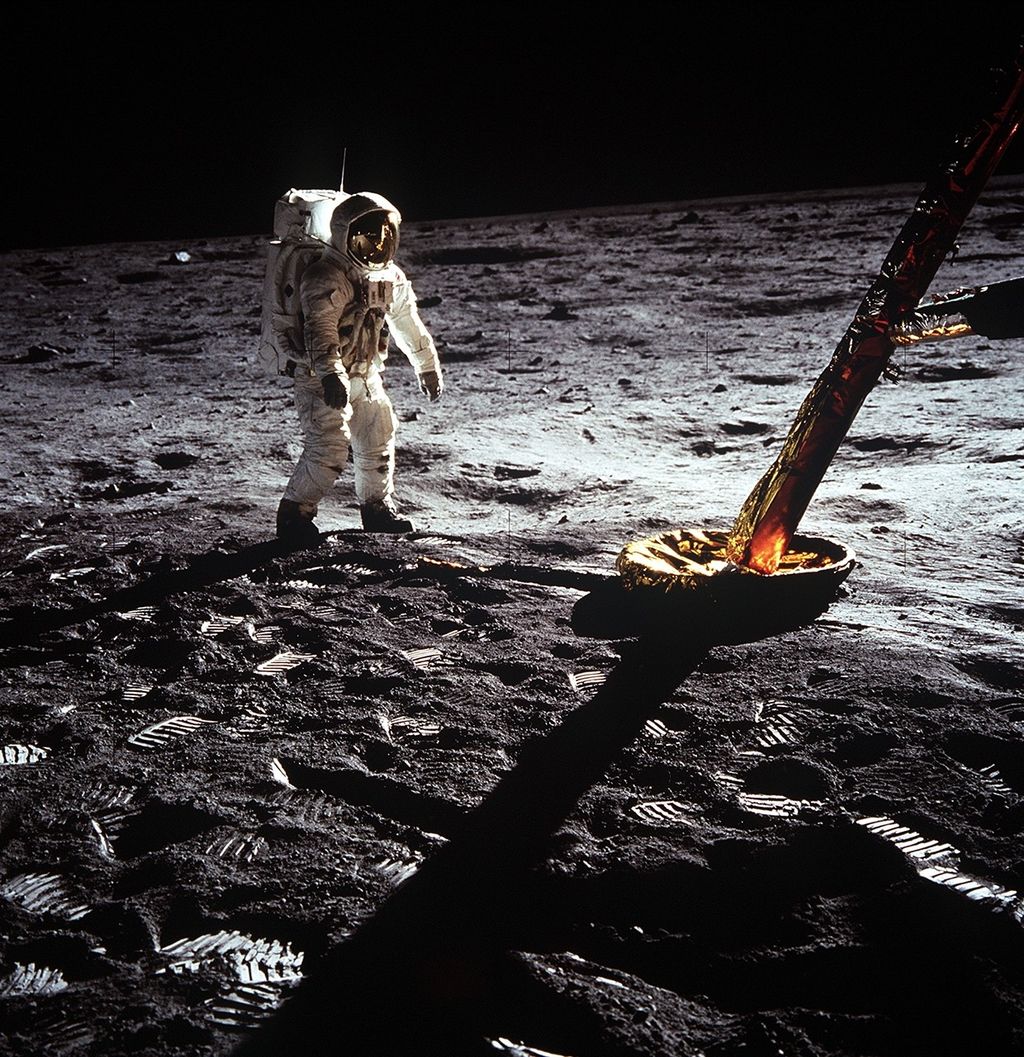1 min read
Artist’s Illustration of Scenario for Plasma Ejections from V Hydrae
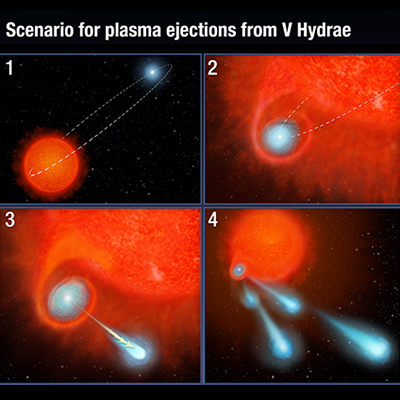
This four-panel graphic illustrates how the binary-star system V Hydrae is launching balls of plasma into space.
Panel 1 shows the two stars orbiting each other. One of the stars is nearing the end of its life and has swelled in size, becoming a red giant.
In panel 2, the smaller star's orbit carries the star into the red giant's expanded atmosphere. As the star moves through the atmosphere, it gobbles up material from the red giant, which settles into a disk around the star.
The buildup of material reaches a tipping point and is eventually ejected as blobs of hot plasma along the star's spin axis, shown in panel 3.
This ejection process is repeated every eight years, the time it takes for the orbiting star to make another pass through the bloated red giant's envelope, shown in panel 4.
About the Object
- R.A. PositionR.A. PositionRight ascension – analogous to longitude – is one component of an object's position.10h 51m 37.2s
- Dec. PositionDec. PositionDeclination – analogous to latitude – is one component of an object's position.-21° 15' 00"
- ConstellationConstellationOne of 88 recognized regions of the celestial sphere in which the object appears.Hydra
- DistanceDistanceThe physical distance from Earth to the astronomical object. Distances within our solar system are usually measured in Astronomical Units (AU). Distances between stars are usually measured in light-years. Interstellar distances can also be measured in parsecs.1,200 light-years (roughly 400 parsecs)
About the Data
- Data DescriptionData DescriptionProposal: A description of the observations, their scientific justification, and the links to the data available in the science archive.
Science Team: The astronomers who planned the observations and analyzed the data. "PI" refers to the Principal Investigator. - InstrumentInstrumentThe science instrument used to produce the data.HST>STIS spectroscopy
- Exposure DatesExposure DatesThe date(s) that the telescope made its observations and the total exposure time.Jan. 2002; Dec. 2002; Jan. 2004; July 2011; Jul. 2012; and Jul. 2013 (Exposure time: Several exposures, 1 - 914 seconds)
- FiltersFiltersThe camera filters that were used in the science observations.Gratings: G430M (419 nm), G750M (658 nm)
- Object NameObject NameA name or catalog number that astronomers use to identify an astronomical object.V Hydrae, V Hya
- Object DescriptionObject DescriptionThe type of astronomical object.Carbon Star, Variable Star
- Release DateOctober 6, 2016
- Science ReleaseHubble Detects Giant ‘Cannonballs’ Shooting from Star
- Credit
Share
Details
Claire Andreoli
NASA’s Goddard Space Flight Center
Greenbelt, Maryland
claire.andreoli@nasa.gov


